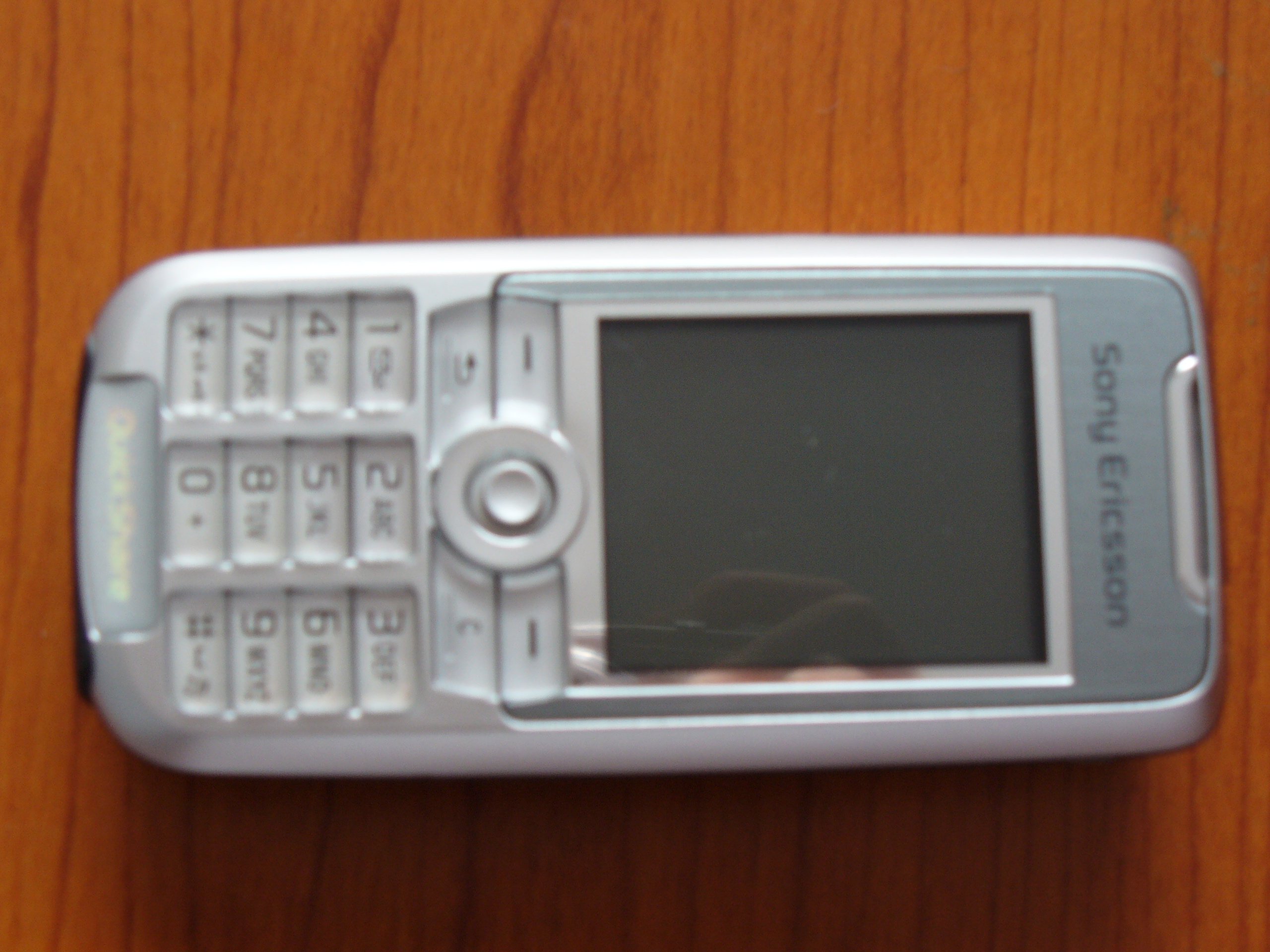- Sony Ericsson K700
Infobox Mobile phone
name = Sony Ericsson K700

screen = 176x220pixel s, 65,536 ColorTFT LCD
ringtone = Polyphonic Sound 40 voices, Real tone (MP3 )
memory = 41MB Internal
networks =GSM 900, GSM 1800, GSM 1900
connectivity =GPRS ,Bluetooth , IrDA
size = 99 x 46.5 x 19.5 mm (3.9 x 1.8 x .8 inches)
weight = 93gThe
Sony Ericsson K700 was introduced in2004 as a high-endmobile phone , and as a successor to the T630. It was succeeded by the K750.Features
The K700 features
Bluetooth , IrDA,GPRS (4+2),J2ME support, and a 640x480 (VGA resolution)digital camera which is capable of taking still photographs and videos. The digital camera has 4xdigital zoom and aLED light which is bright enough to use as both a flash for the camera and a torch. The digital camera can extrapolate photographs to higher resolutions - up to 1280x960 in extended mode, about 1.2 megapixel resolution, however, due to poor VGA quality, pictures often appear to be pixelated when uploaded onto a PC. The K700 also has a built-inemail client, WAP andHTML browser which supports the SVG Tiny specification, a media player which is capable of playingMIDI ,WAV ,MP3 and AAC audio files and3GP ,MPEG-4 video files, and anFM radio (which is only operable when the supplied headphones are inserted). MP3 files can be used as ringtones except the Vodafone edition due to copyright infringements.Fact|date=September 2007Its J2ME
virtual machine supportsJSR-184 , which is an API that allows the creation of mobile applications which produce3D computer graphics . It is advertised as having 41megabytes of built-in memory, which is not expandable.One unusual feature of the device was its support of the HID
Bluetooth profile, under the name of "Remote Control". This is the first instance of HID profile support in a mainstream device. This poorly documented feature allows the device to function as acomputer keyboard /mouse. This feature has been included in most subsequent Sony Ericsson models, such as the Sony Ericsson S700 and K750.A feature which allows access to system information which isn't accessible through the interface menu can be accessed by pressing: right, *, left, left, *, left, *. This feature allows checking of the phone functions such as the screen (can be used as SOS), camera, flash (can be used as SOS), speaker, microphone. There is also another way to light up the backlight go on and off simultaneously:
1. Turn backlight off.2. Make a new appointment with a reminder about a few minutes after the present time to see the backlight (eg. Present time: 10:44AM, change to 10:51AM).3. Wait till the time for the Appointment to alert you, when it does; the phone should be lighting on and off including the keyboard's backlight, this can then be used as an SOS signal.
The volume button can also be used as a colour picker when editing pictures, this feature has been removed after the T630i but can be accessed when editing certain types of pictures.
Variants
* K700i ('i' for International'):
GSM 900/1800/1900 for all regions except China.
* K700c ('c' for China): GSM 900/1800/1900 for China, featuring Chinese keypad and Chinese language interface.Design
The K700 weighs 93g (3.3 oz). It is a rectangular unit that is typically held in the palm of the hand, with the buttons operated by the thumb. It has the 'dual-front' design common to most Sony Ericsson mobile phones since the T630, with the back of the mobile phone designed to look like a digital camera. The central joystick button is used for selecting options and navigating menus (as this is essential for phone operation it wears quickly and jams under heavy use), with the "C" button as an 'undo' or 'delete' button, and the arrow-labelled button as a 'return' or 'back' button. The two buttons labelled by black horizontal lines, known as 'hotkeys' or 'soft keys' perform the function of making binary decisions, labelled on the phone's display (e.g: save/discard). The on/off button is a black button that is located on the top of the phone next to the IrDA port.
There are three sidekeys on the left of the phone; two control
volume (for both calls and when playing sound files) - these also control brightness when in camera mode; and when held down can skip between tracks whilst using the minimised media player. The third sidekey activates thedigital camera mode, and also acts as a shutter button when in camera mode.A sidekey on the right of the phone starts the web browser and goes to the home page as set in the Internet profile settings. There is a sticker on this side, labelled "Online" on non-network specific handsets. Additionally, the
rubber pad at the very base of the front of the phone (below the main keypad and labelled "Quickshare" in non-network specific versions) is prone to becoming detached.The bottom end of this phone features the second generation of connectors, dating back from the
Ericsson T28 , and aptly dubbed the "T28" port. They are covered by a rubber clip, which is also prone to becoming horribly loose and, in some circumstances, falling off. This is Sony Ericsson's last phone to use the T28 connector (later models, as of the K750, use the Sony-designed FastPort connector).External links
* [http://www.sonyericsson.com/K700/index.aspx Official website]
* [http://www.sonyericsson.com/cws/support/phones/k700i?cc=gb&lc=en Offical Support Site]
* [http://www.sonyericsson.com/spg.jsp?cc=global&lc=en&ver=4001&template=pc3_2_3_1&zone=pc&lm=pc3_2&pid=10139&esi=true} Official Sony Ericsson press images of the K700]
Wikimedia Foundation. 2010.
